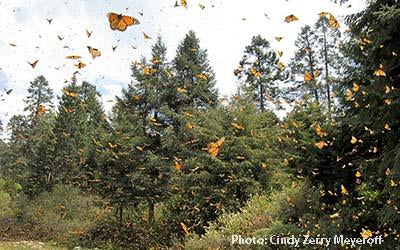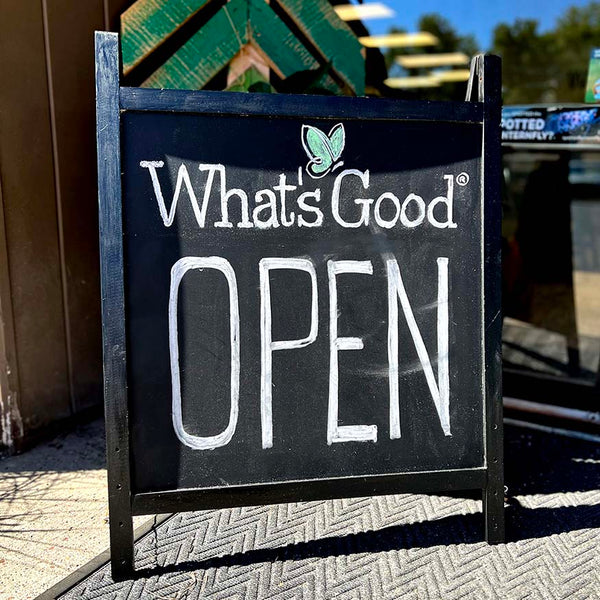FREE 🇺🇸 SHIPPING ON ORDERS $75+
FREE 🇺🇸 SHIPPING ON ORDERS $75+
Add description, images, menus and links to your mega menu
A column with no settings can be used as a spacer
Link to your collections, sales and even external links
Add up to five columns
Add description, images, menus and links to your mega menu
A column with no settings can be used as a spacer
Link to your collections, sales and even external links
Add up to five columns
The Butterfly Effect
April 22, 2021

Remember Jeff Goldblum in "Jurassic Park" explaining chaos theory? "A butterfly can flap its wings in Peking, and in Central Park, you get rain instead of sunshine."
The idea that something insignificant can be the root of something more significant is fascinating. Scientists around the globe continue to debate chaos and The Butterfly Effect. We're not scientists, so in full disclosure we are hijacking The Butterfly Effect to make our point:
The little things we do have impact—for good or bad. On one hand, that one plastic straw is harmless alone, but when you realize it's just one of billions of plastic straws, you start to fathom the bigger impact.
On the other hand, if you do one small green thing and someone else does one small green thing, and someone else does one small green thing, something larger and more positively transformative will happen.
Now, let's stay with the butterfly theme... with all that's urgent and poignant going on in the world, why do we care about these little creatures?
Monarch butterflies contribute to the health of the planet in ways beyond their whimsical flight and beauty. We need lots of them because monarchs are an important food source for birds, small animals, and other insects. Without them, other species populations start to fail, too.
Monarchs, like the bees, are pollinators which means they help grow plants which in addition to being food sources for other creatures, plants protect and enrich the soil, and provide shelter for insects, birds, and small critters.
In this instance, the lack of butterflies have tremendous and serious effects.
We suggest you pop over and read this article, "Monarch butterfly population moves closer to extinction" by Olga R. Rodriguez on the phys.org site. It offers a startling look at decreasing monarch populations. For example, Western wintering monarchs who winter each year in California, "An annual winter count by the Xerces Society recorded fewer than 2,000 butterflies, a massive decline from the tens of thousands tallied in recent years and the millions that clustered in trees from Northern California's Marin County to San Diego County in the south in the 1980s."
Which is WHY if you’ve ever ordered from us, we gave you a pack of FREE pack of milkweed seeds and maybe also pollinator seeds with your first order. It's one small way that we help raise awareness for the monarchs and for Save Our Monarchs, a family-run .org doing extraordinary work to save them.
And if you were able to plant your seeds, well then... we've all done something small that will help. You may have added to the monarch population!
Why milkweed seeds? To put it bluntly, without milkweed, monarchs will die out. The depletion of milkweed is an integral reason monarchs are endangered. It’s the ONLY plant female Monarchs will lay their eggs on. AND the only plant newly emerged Monarch caterpillars will eat. They’re not just being picky. Milkweed gives them super powers. They eat it because milkweed tastes horrible to their predators. So imagine a newly emerged caterpillar plumping up on nothing but milkweed. They taste like milkweed which predators don't like and therefore don't eat their fill of monarch caterpillars—or monarch butterflies.
Where are there fewer milkweed plants? Big agriculture and urbanization of natural habitats mean there are fewer and fewer milkweed plants growing wild or in our own backyards. Even though it has a lovely flower, milkweed is seen as a weed. More often than not, homeowners and landscapers use chemical herbicides to eradicate it. And they're doing a thorough job. Milkweed is all but disappearing form our landscapes and backyards. To add to the issue, over development and deforestation along Monarch migration routes reduce their ability to rest and feed during their travels. As a result, many die from drought and cold.
What can you do? Grow your milkweed! Plant it in your garden, along the side of a road, in a park...just let it grow.
Don't have milkweed? Every order in April, whether it's your first or 10th order with us, will receive a fresh pack of milkweed seeds. After that, we'll resume just putting them in first orders.
Will the butterflies find it? Female monarchs work with male monarchs to find the milkweed. Once found, she will lay one egg at a time, and typically on different leaves to ensure an ample food source for the emerging caterpillar. A female can lay 300-500 eggs over just two to five weeks. If every egg gets its own leaf, you start to understand the need for Milkweed.
Fun Fact: You can actually ‘hunt’ for monarch eggs. Look for a little white pinpoint on the bottom of a milkweed leaf, then take a few leaves with eggs indoors and ‘grow’ your own monarchs. A good activity because you protect them from predators.
Back to the butterfly effect... Last spring, we starting packing one pack of milkweed seeds in every 1st order. Now a year later, we've given 800 packs of milkweed or pollinator seeds away—across the nation.
We hope and imagine that even if only a quarter of our customers planted them in a pollinator garden or in a park or along the side of the road, that’s something like 6,000 plants and maybe 18,000 monarch butterfly baby beds.
All that to say, we believe in the butterfly effect. Doing one small, green thing matters.
If you want to learn more about Monarchs, visit these sites
Save Our Monarchs
Monarch Joint Venture
Here’s a site where you can find the best varieties of Milkweed seeds in your region:
https://www.growmilkweedplants.com/usa.html
If you want geek out on the real scientific theory around The Butterfly Effect, start here:
https://en.wikipedia.org/wiki/Butterfly_effect
Leave a comment

Good News
If any email is worthy of your inbox, it's this. Our goal is 1–2x per month. You'll get helpful & inspiring eco info, plus subscriber-only discounts.
Welcome to What's Good
Here's your $10 coupon
COPY THIS CODE TO USE IN CHECKOUT
